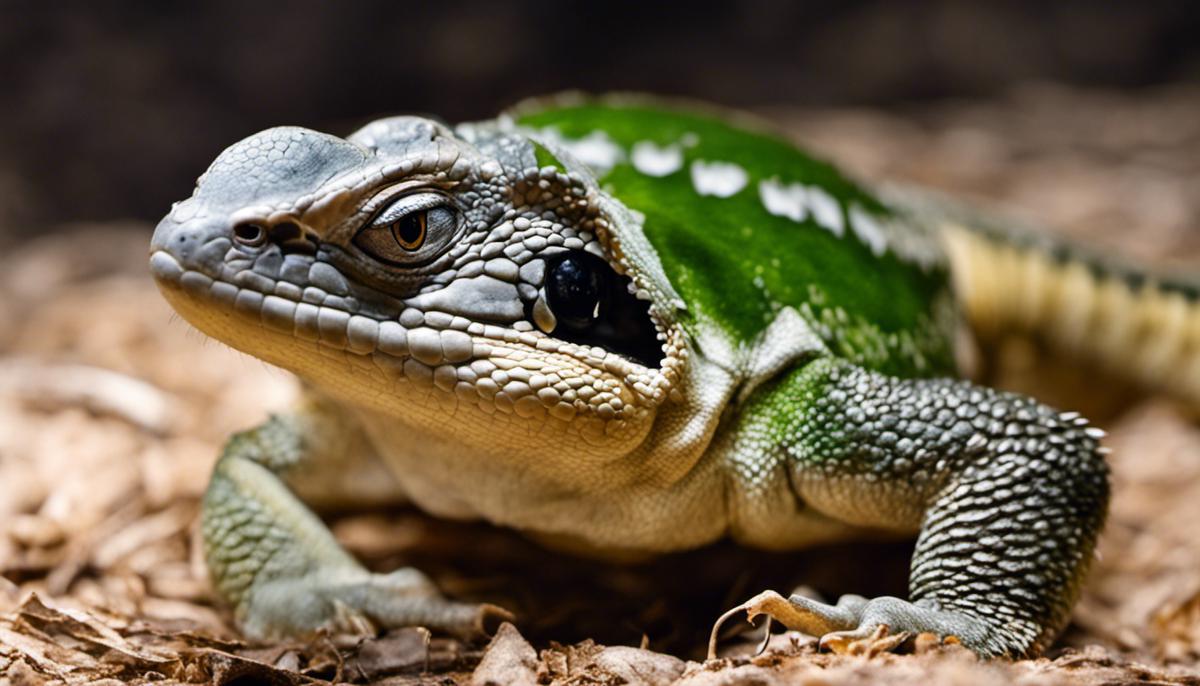Unseen by many, reptiles represent a fascinating microcosm of nature’s wonder, engineering, and resilience. As one of the planet’s most enduring classes of creatures, they’ve managed to conquer nearly every kind of terrain the earth has to offer, from the densest jungles to the driest deserts. Behind every crevice, beneath each rock, they’re a testament to millions of years of adaptation and survival in the face of shifting environments and ecosystems, manifested in the myriad of species that we see today. This exploration delves deep into the fascinating world of reptiles; their unique characteristics, geographically predominant species, the intriguing extinct species, the vital exploration of their conservation status, and the detailed look into caring for them as pets. Strap in for a journey into the world less explored and highly misunderstood.
Understanding the Unique Characteristics of Reptiles
Crawling into the Diverse World: The Reptilian Wonders
When one dives deep into the world of reptile husbandry, there’s an incredible sense of being privy to nature’s variety show like no other. The fascinating fact about these crawling wonders, dividing them from their feathered, furred, or finned counterparts, is their ability to showcase evolution in its most primeval and progressive form. Reptiles display an array of stunning characteristics that set them apart from other animal species in exceptional ways.
First and foremost, reptiles are exemplary scholars in the lesson of longevity. From the galapagos tortoise, known to live for over a century, to the grassland-dwelling tuatara with lifespans reaching 200 odd years, these cold-blooded wonders undoubtedly outlive their counterparts in the animal kingdom. This remarkable aspect of their biology has intrigued many and drawn numerous hobbyists into the captivating realm of reptiles.
On the physical front, provocative and complex traits dominate. Reptiles’ dry, scaly skin, is not just an interesting texture, but a guard against water loss in harsh environments. This adaptation stems from their evolutionary history dating back over 300 million years. Then there’s the rather incredible ability of some reptiles to regenerate their tails, after they’ve been lost, a feature other animal species only gaze upon in astonishment.
Reproductive strategies also distinguish reptiles in captivating ways. Unlike other animals that primarily often have one method, reptiles offer a veritable buffet of reproductive strategies. While many bring forth live youngsters, like boas and vipers, others lay hard-shelled eggs, like our turtle and crocodile friends. Yet, some other reptiles, such as the coastal carpet python, lay soft-shelled eggs.
Perhaps nothing paints a more vivid image of their distinctiveness than their shapeshifting abilities. By this, the reference is to the chameleons’ enviable talent to change their skin colors. Beyond mere camouflage, this also enables intricate communication and complex courting rituals. On the other hand, beaded lizards and Gila monsters amongst reptiles are venomous, landing them a unique position in the animal kingdom.
The adaptation of reptiles to virtually every earthly habitat is a dazzling aspect that deserves a standing ovation. From deserts to oceans, swamps to mountains, these creatures have marked their territory. Some species spend the brunt of their lives underground, like the desert-dwelling Sand Boa while others, like the Green Anaconda, spend much time in the water highlighting their versatile nature.
Exploring the reptilian world is like delving into the annals of Earth’s history and its evolutionary marvels. The complexities and intriguing nature of reptiles make it an enriching hobby and an enlightening journey into a realm that embraces power, ancient wisdom, survival strategies, and evolution at its peak. A meander into this scale-clad world is less of a pastime and more of a gateway to a myriad of enlightening discoveries. And therein lies the triumph and the charm of this transfixing hobby.
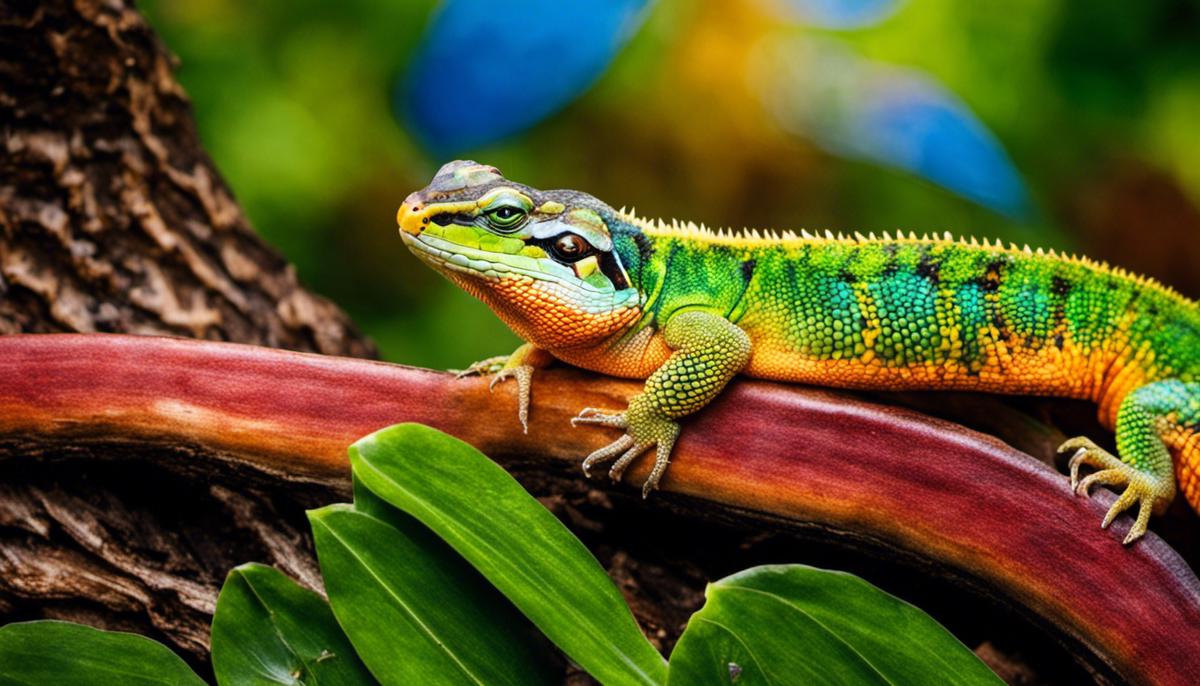
Geographically Predominant Reptiles and their Habitats
Mapping the World’s Reptile Habitats: A Delve into Herpetology
It’s incredible how significantly a reptile’s habitat can determine its lifestyle and characteristics. The world of reptiles is geographically diverse; they manage to thrive in an array of environments ranging from dry deserts to lush rainforests. Let’s take a more in-depth look at these primary habitats and the remarkable reptiles that call them home.
Desert dwellers are undeniably the most resilient. The iconic lizard or rattlesnake of the southwestern United States is a perfect example. These reptiles have developed numerous strategies to overcome the harsh desert climate, conserving water by primarily being active at dawn and dusk (referred to as being crepuscular), and burrowing during the highest heat of the day. A prime embodiment of this climate adaptation is the horned lizard, which has amazing capabilities to supplement its hydration by absorbing water through its skin and stomach.
Moving to the tropics, the rainforests and jungles are rich with reptile life. Warm, moist climates suit reptiles perfectly and it’s here, amidst the dense foliage and swampy marshes, that you’ll find a multitude of vibrant snakes, lizards, and exotic chameleons. With dappled light peeking through the dense canopy, the Costa Rican eyelash viper can be found quietly waiting for its next meal, demonstrating the art of perfect camouflage. Let’s not forget the Amazon Basin, where the world’s largest reptile, the Anaconda, weaves its way through the waters.
In stark contrast, the cold-blooded reptiles are surprisingly well-adapted to temperate climates. Take the European grass snake, for instance, thriving from Northern Scandinavia through to Southern Europe, bravely enduring colder winters by employing a hibernation-like state known as brumation. Or consider the common adder, the United Kingdom’s only venomous snake, that makes its home in the chilly expanses of the British countryside.
How about the coastal settings? That’s right, reptiles can happily inhabit seaside areas. Sea turtles are obvious examples, traveling vast distances across the open ocean yet always returning to their natal beaches to lay eggs. Closer to shore, one might encounter the all-too-charming saltwater crocodile – albeit, from a safe distance, these formidable predators lurk in coastal marshes and mangroves across Australasia.
Finally, let’s delve into caves – a challenging habitat mastered by only select species. One standout example is the intriguingly named Texas Blind Salamander. Having utterly adapted to subterranean life in aquatic caves, this salamander is entirely sightless and characterized by its stark, albino-like appearance.
In exploring these primary habitats, one thing is abundantly clear – reptiles demonstrate a mesmerizing diversity of adaptations. From the driest deserts to the lushest rainforests, they continually prove to be impressive survivors. The importance of understanding and respecting these habitats and the reptiles they support is paramount. After all, it truly is a reptile’s world out there!
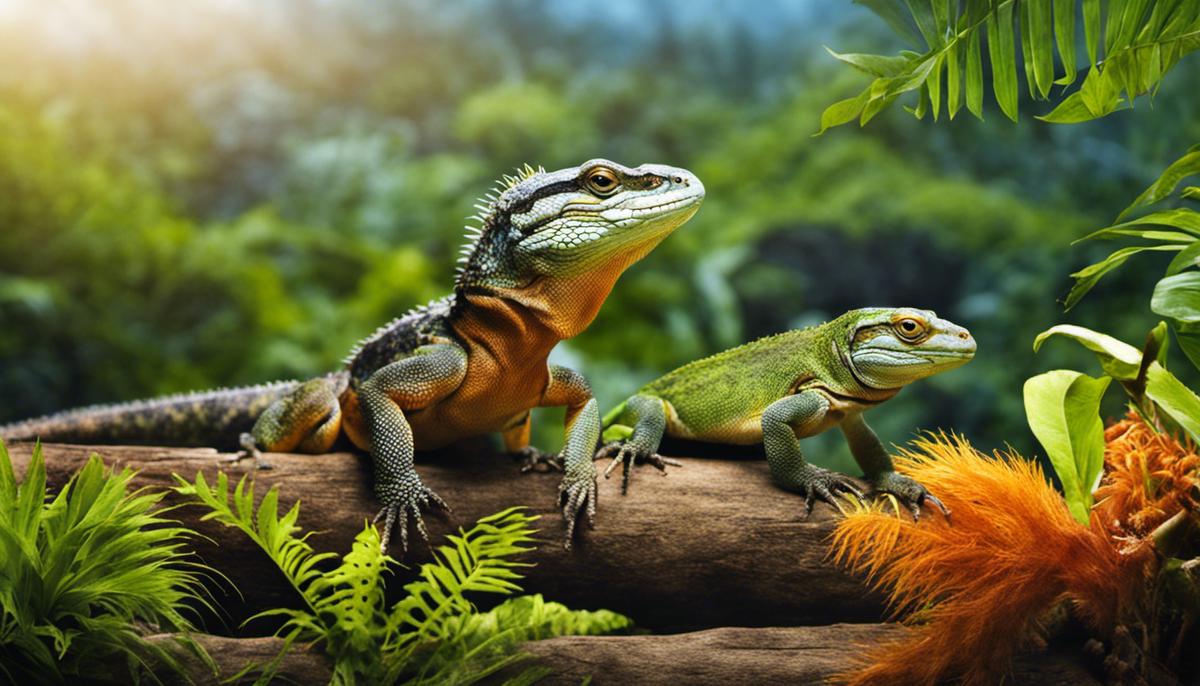
Extinct Reptile Species and Evolution
Diving deeper into the world of extinct reptiles and their evolution, fresh and compelling insights surface that underline the remarkable complexity of this diverse group. Instead of looking at contemporary species alone, let’s journey back in time and unearth the incredible lessons extinct reptile species and their evolution are capable of teaching us.
Foremost, the history of evolution amongst reptiles paints a fascinating picture of survival. Each evolutionary leap was a sign of resilience and adaptability, with organisms finding innovative ways to thrive in diverse habitats, from swampy wetlands to rugged mountain terrains. Fossils of extinct reptiles, like those of Plesiosaurs and Mosasaurs, show that some reptiles even managed to conquer the open sea!
Moreover, evolution didn’t stop with survival; it adapted to predation and contribution to local ecosystems as well. Prehistoric predators like the mighty Tyrannosaurus Rex and the cunning Velociraptor reflect the apex of carnivorous evolution, showcasing the diverse strategies reptiles have used over the eons to secure a meal.
More than just predators, extinct reptile species played varied roles from herbivores to omnivores. The famous Triceratops, for instance, was a defensive herbivore. This diversity is mirrored in current reptilian populations, reminding everyone that reptiles have always been fundamental cornerstones in their respective ecosystems.
Extinct reptiles also yield clues about limb adaptation and versatility. From the winged Pterosaurs, ancestors of modern birds, to the limbless ancestors of snakes, extinct species offer proof that reptiles have long used limb versatility to their advantage. Whether it’s flying, slithering, climbing, or swimming, reptiles have found a way to adapt and prosper.
While the present array of reptiles demonstrates incredible adaptability, looking at the extinct species reinforces how evolution has been fine-tuning them for survival for hundreds of millions of years. The ghostly image of the Dimetrodon, with its famous sail-like fin, reveals the early attempts of reptiles to regulate body temperature, providing a peek into the kind of environmental challenges they faced as they evolved.
The fascinating journey of reptile evolution, with its captivating twists and turns, provides impeccable evidence of a diverse group that’s been adapting and evolving throughout the aeons to meet the challenges nature sets forth. Drawing on the wisdom carved into the fossil record, it highlights the innate resilience and adaptability reptiles possess, a testament to the wonders of evolution.
Undeniably, extinct reptile species and their evolution hold necessary keys to comprehend the adjustments and transformations within this group. The past, present, and possibly the future of reptiles can be understood by excavating these precious jewels of information that the extinct species leave behind. This rewarding pursuit unleashes a wealth of insight not just about reptiles but the dynamics of life on Earth. Exploring extinct reptile species and their journey gives us more than just facts. It provides a clear lens through which we can marvel at the ongoing, ever-adapting spectacle, that is life.
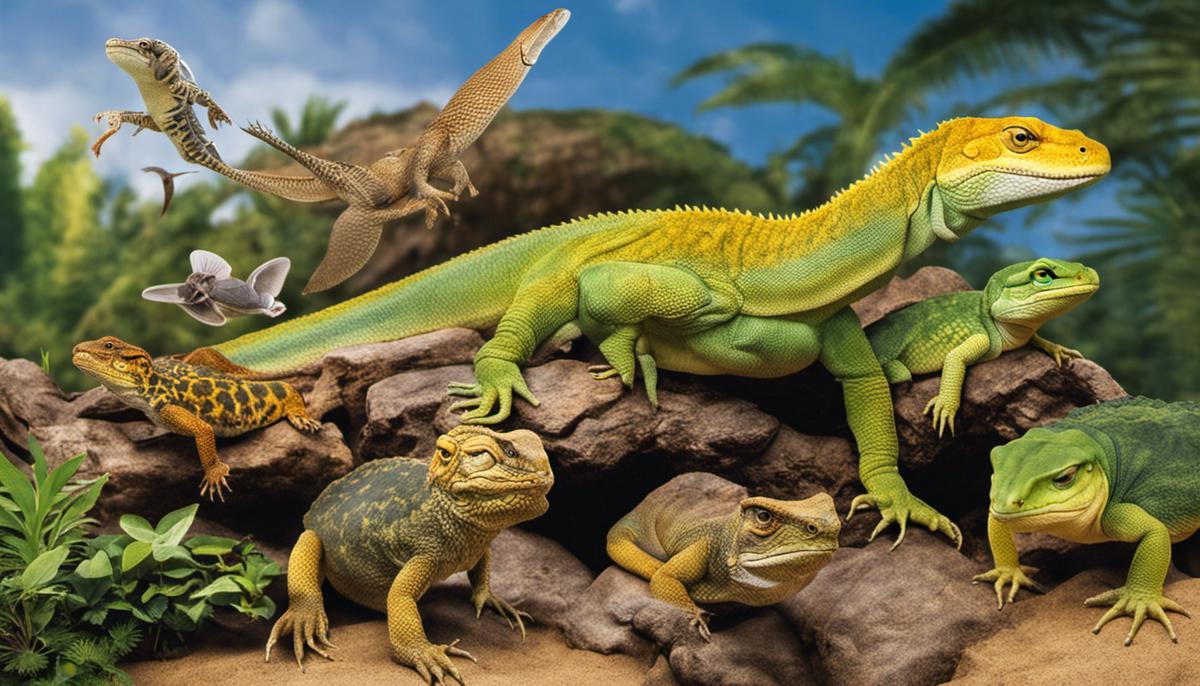
Conservation Status of Reptiles
Swept up in the vast and varied world of reptiles, now comes the point to address a somber yet vital facet of our scaly friends – the current conservation status of different reptile species. This topic is as critical as it is boundless, studded with diverse storylines just like the myriad reptile species themselves. Let’s take this journey together, delving into this dimension of the reptilian narrative with our characteristic fervor.
Kicking off with the gliding leaf-tail gecko of Madagascar – these delicate lizards are global conservation icons for a reason. Their distinctive leaf-shaped tails earn them the spotlight, yet it’s their precarious status defined as “endangered” by IUCN that truly calls for attention. Unwavering in the face of adversity, they remain a beacon of fascination, teaching us about the unique challenges faced by rainforest reptiles.
Swapping Madagascar’s exuberant forests for Australia’s arid desert, we encounter the thorny devil. This wonderfully bizarre creature, armored with countless protrusions, is unlisted in the IUCN Red List – but that doesn’t translate to a trouble-free existence. Habitat loss and climate change have raised concerns, reaffirming the need for continued vigilance even when immediate threat appears distant.
In a similar vein, the American alligator, once critically endangered, has surged back thanks to strict regulation and public education efforts. Currently listed as “least concern”, these apex predators embody the power of dedicated conservation action.
Venturing into coastal realms, we’re introduced to the strikingly patterned Hawksbill sea turtle. Tragically, these aesthetically stunning reptiles are critically endangered, falling prey to poaching for their ornate shell, nest predation, and coastal development. Their tale is a grim reminder of the threats faced by marine reptiles, demanding concerted global efforts for their protection.
The reticulated python, king of the serpentine world by virtue of being the longest, traverses a rather ambiguous conservation road. Unlisted on the IUCN Red List, they nevertheless suffer from habitat loss, and ironically, their sheer size marking them as prized hunting targets.
Lord of their extraterrestrial-looking realm, the Texas blind salamander is an echo in the dark from the prehistoric era. These eyeless, aquatic cave dwellers are listed as “vulnerable”. Their isolated existence in the subterranean waterways of Texas makes them particularly susceptible to water pollution, once again illustrating the consequences of human interference in delicate ecosystems.
In reviewing these diverse reptile species and their conservation statuses, we witness the shared struggle for survival in an ever-changing world. While some species flourish, others teeter dangerously on the brink of extinction. Their stories lay bare the monumental effect of human actions upon these unsung heroes of the natural world.
The journey through the captivating universe of reptiles is by no means a static one, but an ever-evolving tableau. As we venture deeper, the gravity of the conservation conversation comes into sharper focus. In the spirit of the resilient reptile world we cherish, let us embrace this knowledge, commit to change, and foster a future where these remarkable creatures continue to thrive. After all, nothing less than the spectacular, vivacious symphony of reptile life hangs in the balance. Let the harmonies of conservation resonate, echoing from our shared passion for these fascinating creatures.
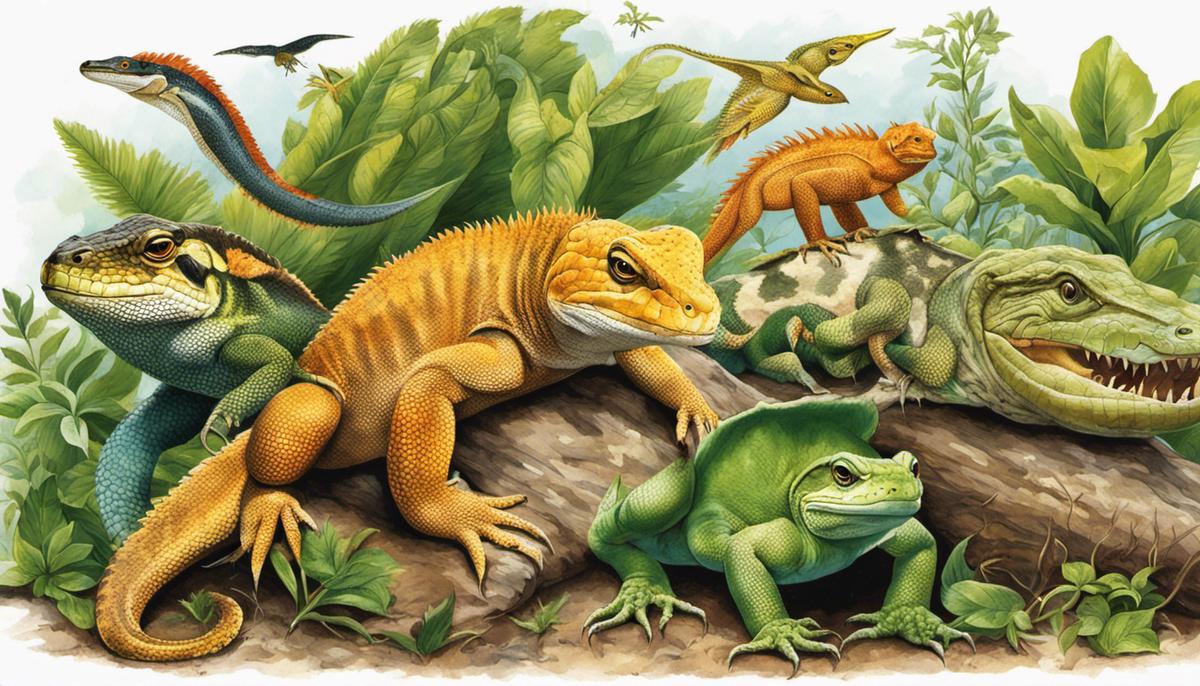
Caring for Reptiles: Pet Reptile Species
Taking Care of Your Cold-Blooded Companions: A Guide to Pet Reptile Care
Diving deeper into the realm of exotic pet keeping, owning a reptile affords one an up-close view into a wildly diverse and fascinating world, an alien realm right within the comfort of one’s home. But taking care of a reptile requires a healthy understanding of species’ unique needs.
For starters, their habitat is key. Just as a hawksbill sea turtle soars beneath the waves or a Texas blind salamander navigates the labyrinthine caves, a pet reptile’s habitat must closely mirror its natural environment to ensure its health and happiness. Aquariums or terrariums furnished with vegetation, rocks, caves for hiding, and basking spots under a specialized lamp mimic their homeland, their temperature, humidity levels, and lighting carefully regulated according to their species-specific needs.
Certainly, one cannot emphasize diet and hydration enough – a careful balance of fruits, vegetables, and protein sources, supplemented with calcium and vitamins, nourishes these ecothermic creatures. A reticulated python, for instance, thrives mostly on meat, while the Thorny Devil of Australia revels in a diet of ants. Maintain a water dish large enough for soaking, as some species of reptiles hydrate largely through their skin.
Healthcare for these unique creatures can certainly prove challenging, owing to the complexity of species and their individual needs. Regular veterinarian check-ups, and keeping an eye out for signs of illness such as lethargy, loss of appetite, or changes in waste will help them to lead a long and healthy life.
Handling is another aspect of reptile care that demands respect and caution. While the American alligator might revel in the occasional stroke, the Thorny Devil of Australia requires a hands-off approach due to its spiny armor. Understanding the individual comfort levels of these fascinating creatures can lead to a deep mutual respect and form a unique bond between owner and pet.
Lastly, the commitment to maintaining an enriching environment extends to the most important element of responsible reptile ownership – ensuring their mental well-being. Enough room for exploration, addition of live plants for a slice of nature, contriving climbing structures for those arboreal species, or swimming spaces for the aquatically inclined can all play a paramount role in nurturing a content and engaged pet.
Taking care of reptiles is a learning curve, one that opens a window to our planet’s often overlooked wonders. It is a rewarding expedition into a world that tick-tocks to a rhythm far removed from our own, a journey that brings one closer to the marvels of evolution and the power of adaptation, a silent opera that plays out in every blink of a gecko’s eye or flick of a python’s tongue. After all, whether it is a gliding leaf-tail gecko of Madagascar gracing your terrarium or the American alligator sunning itself next to your pond, these ambassadors of the wild offer an unmatched glimpse into the vast tapestry of life co-inhabiting Planet Earth.
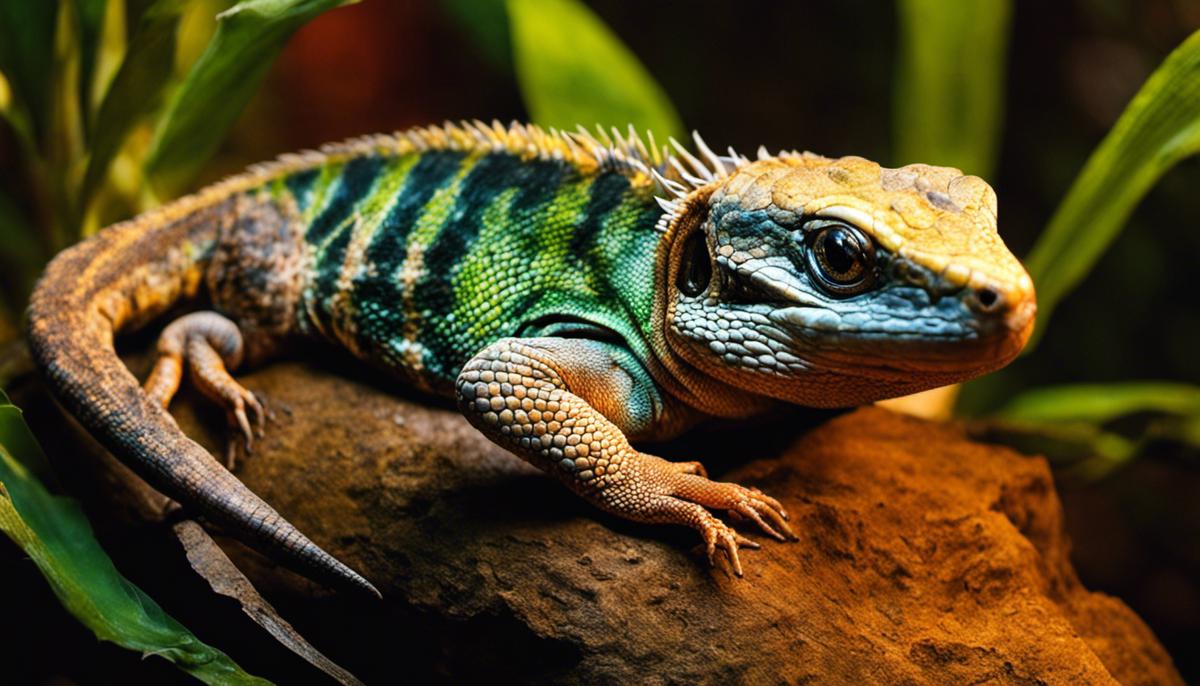
Discovering the world of reptiles anchors us more deeply in the web of life on our planet, reminding us that each creature, no matter how alien or familiar, has a role to play in the symphony of existence. Reptiles, from the smallest gecko to the most imposing anaconda, not only have an ecological role but also an integral part in human culture and mythology. As we continue to learn, value, and protect this astonishingly varied group of animals, and even invite some species into our homes as pets, we expand our understanding of nature and our place within it. The greater our understanding, the more effective our conservation efforts will be, ensuring that future generations also get a chance to marvel at these remarkable occupants of our world.

